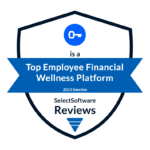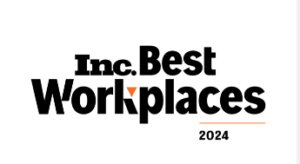This article was written by Tom Spann, Brightside CEO and co-founder, and originally published in HR Daily Advisor on June 6, 2024.
In December 2023, the Consumer Financial Protection Bureau (CFPB) announced plans to outline how consumer lending laws interact with earned wage access (EWA) programs. These programs have grown in popularity as a solution for employees living paycheck to paycheck, offering early access to earned wages and, in theory, helping to dodge financial penalties like late fees and negative impacts on credit scores.
However, the landscape of EWA solutions is complex, marked by varied terms, conditions, and fees that are not always clear to employees or employers. Moreover, evidence suggests that these solutions are often used like painkillers, leading many into a cycle of dependency that worsens their financial health.
While the federal regulation that is on the horizon will likely create more transparency around the implications of various EWA programs, employers have a critical role to play in protecting employees from potential EWA misuse right now. Here’s how you can start:
Shift EWA oversight to HR
Traditionally, payroll departments have managed EWA, but they’re not typically focused on the broader implications of employee financial health. While the core proposition of giving people access to their pay when it is earned makes sense, the value is obliterated when people spend a chunk of their income on EWA fees. Human resources (HR) teams are better motivated and equipped to understand and mitigate the huge impact financial stress has on productivity and overall employee wellbeing. EWA should be an opportunity to improve financial health, but it will not be when the vendor makes more money from selling more “loans.” If you, as an employer, are getting a lot of engagement with EWA, it means you have a lot of employees whose financial stress is costing your shareholders a lot of money. Don’t let EWA make the situation worse.
Understand the specifics and their impact on human behavior
Employers offering EWA must ensure their teams understand not only all associated fees, terms, and conditions of an EWA program but also what that will mean to employees in the real world. I recently talked to a benefits leader at a jumbo employer who was disturbed that 80% of the users of their “free” EWA product were paying $4 to get their $100, on average, right away, instead of waiting a day or two. This behavior of people under financial stress should not be surprising. Certainly, the providers of EWA products expect this, just like they expect their products to be addictive. Be cautious of any financial solution providers profiting from fees and interest. They are good at making money while your healthcare costs, safety incidents, turnover, and absenteeism all go up, as your population gets financially sicker.
Build EWA into your financial health solution
EWA should only be one small part of a bigger financial health solution. There are times when an EWA solution or a similar cash advance option can provide financially struggling employees with the immediate funds they need. So how does it become part of a program that improves financial health? Your frontline employees who are using EWA should instead be offered:
- A full range of solutions for a money emergency from a trusted source who will not make money off of any of the solutions they find for the employee. These options must include larger amounts, as very few real financial shocks (which 60% of households have every year, according to Pew) are within the $100 average of an EWA advance. A tank of gas to get to work is helpful, but it won’t help an employee catch up on late rent when they’ve missed work to take care of an aging parent, or even provide a solution for a typical car or appliance repair bill. Options can include solutions such as paycheck-linked loans which provide access to cash at affordable interest rates for all employees, particularly those with subprime credit scores.
- Navigation to options that include community resources, government benefits, and employer benefits by a person who works to understand and address the employee’s situation. Posting information or education on a website is not sufficient. Most financially struggling employees do not know what type of help they need or what is right for them without personalized support.
- A trusted partner who can seize “teachable moments” to show employees they can save for the next emergency, help them take action, and build hope that they can improve their financial health.
- Real solutions that make it easy to take continued steps that improve financial health, including reducing debt and interest expenses, and improving their credit score.
The bottom line
By taking these steps, employers can significantly influence the financial health of their employees. It’s about offering meaningful support that not only addresses immediate needs, but also builds hope and long-term financial resilience.
When companies help employees improve financial health, they have a very real opportunity to improve lives for years to come and drive ROI for their shareholders. Ensuring that the right teams oversee all of your financial benefits, that employees are working with companies that are holistic and are not making money from financial products, and leveraging behavioral science and a comprehensive solution will go a long way to helping vulnerable employees make real progress.
Our commitment to our teams extends beyond the workplace. Let’s make sure our financial wellness initiatives genuinely help them build a better financial future.
Click here to learn more about Brightside Financial Care or to schedule a demo.,





